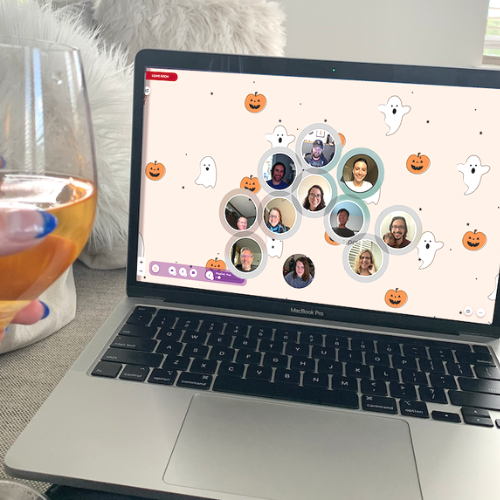For many people, the office can be an exciting and interesting place to work and connect with others in the process. But as many of us have transitioned to remote or hybrid work, building those connections and relationships has become more difficult. And as a result, communication often suffers. How can we improve communication in the remote workplace?
Add in Social Time
One of the easiest ways to build better relationships with your remote colleagues is to build in social time. If you’re already gathering on a semi-regular or regular basis, you probably have the chance to do this in-person. However, there’s no need to wait until those quarterly or annual gatherings to build rapport with your team.
Try adding Social Bookends to your next team meeting. What is a social bookend? It’s a simple 5-10 minutes of social time before the content of your meeting starts. You can use this time to just chat organically, or you can add in a conversation starter or icebreaker to get the conversation flowing. If you have more time, you can even try a small group activity.

Using just a few minutes on a regular basis can over time build up to help your team get to know each other better, build stronger relationships, and ultimately improve communication with your remote team.
Be An Active Listener
A wise man once said that the best gift you can give is your attention. And this holds true no matter the setting, especially in the workplace.
We’ve all been in meetings where you as the speaker can tell the minute your listener stops paying attention. Either they pick up their phone, or just moving around on their mouse or keyboard. As much as we want to be able to multitask, it’s not possible to be an active listener and do something else.
If you’re looking to improve communication in a remote workplace, keep this in mind. Save your emails or texts until the conversation is done. If something is really so urgent that it can’t wait, ask the speaker to pause while you tend to whatever needs to be addressed, and then come back to the conversation when you have attention to give.
Ask for Feedback
Don’t wait for your exit interviews to find out what’s wrong at the company. Feedback is an essential part of any relationship, and this includes remote workplaces.
As a leader, you can use your 1:1 meetings with your team to ask for feedback. Or, if you think they are less inclined to share difficult feedback verbally, send an email or a survey.
You can also use your All Hands Meetings as a good opportunity to both solicit and respond to feedback. Try adding in a pre-meeting survey to find out what your team has questions about, and then use the All-Hands meeting to answer those questions.
Support ERGs
Although most of us try to avoid discriminating against others, the reality is that stereotypes and prejudiced thoughts are very much a social norm – one that we need to work actively against should we hope to reduce their damaging effects.

When it comes to how we think about and treat others, many of us are highly influenced by our perceived social “groups.” Once we see ourselves as a member of a group, humans have a demonstrated psychological tendency to prefer members of this group and apply stereotypes to members who are seen as outside the group.
Above all, focusing on connections with others is the best way to reduce the presence and effects of discrimination both in the workplace and beyond. When people go from being outside to inside the group, it becomes easier to see past stereotypes and instead form meaningful connections with people who have a wide variety of perspectives.
Employee Resource Groups, or ERGs, are an effective way to help your team get to know each other better, no matter their location or job title. Your company can have as many or as few ERGs as your employees want. But they are an excellent way to find people who you may have something in common with that you may not otherwise have a chance to work with or know very well.
Embrace Peer to Peer Recognition
Establishing a recognition system helps to create a culture of positive recognition. An organization that actively promotes the act of giving thanks and recognizing effort and achievement requires empathy of its people. Recognizing a coworker’s contribution means that person had to put themselves in another’s shoes and found them deserving of appreciation. This type of communication helps to bring people together, demonstrating how any group is comprised of many complex individuals who defy stereotypes.
Improving Communication in the Remote Workplace with Scoot
Building stronger relationships and improving communication in the workplace is possible. The challenges and barriers that remote and hybrid workplace models have presented can be addressed.
However, using Zoom and Teams to build relationships isn’t exactly easy. It’s hard to build rapport with a sea of silent gray boxes.
If your team is interested in improving communication and building better relationships in your remote workplace, you may want to consider an alternative. Scoot is a new kind of virtual meeting platform that brings the benefits of in-person networking and socializing to the virtual world.

Instead of static black boxes, attendees in Scoot can move around the room from one conversation to the next, just like you would in real life. Audio changes as you move closer or further away from a group so you can have individual or group conversations. Rooms can be designed to match the event’s theme or your brand with custom backgrounds, room items, and even background music playlists.
Want to learn more? Contact us or check out the website to see how Scoot can help you improve communication in your workplace.
